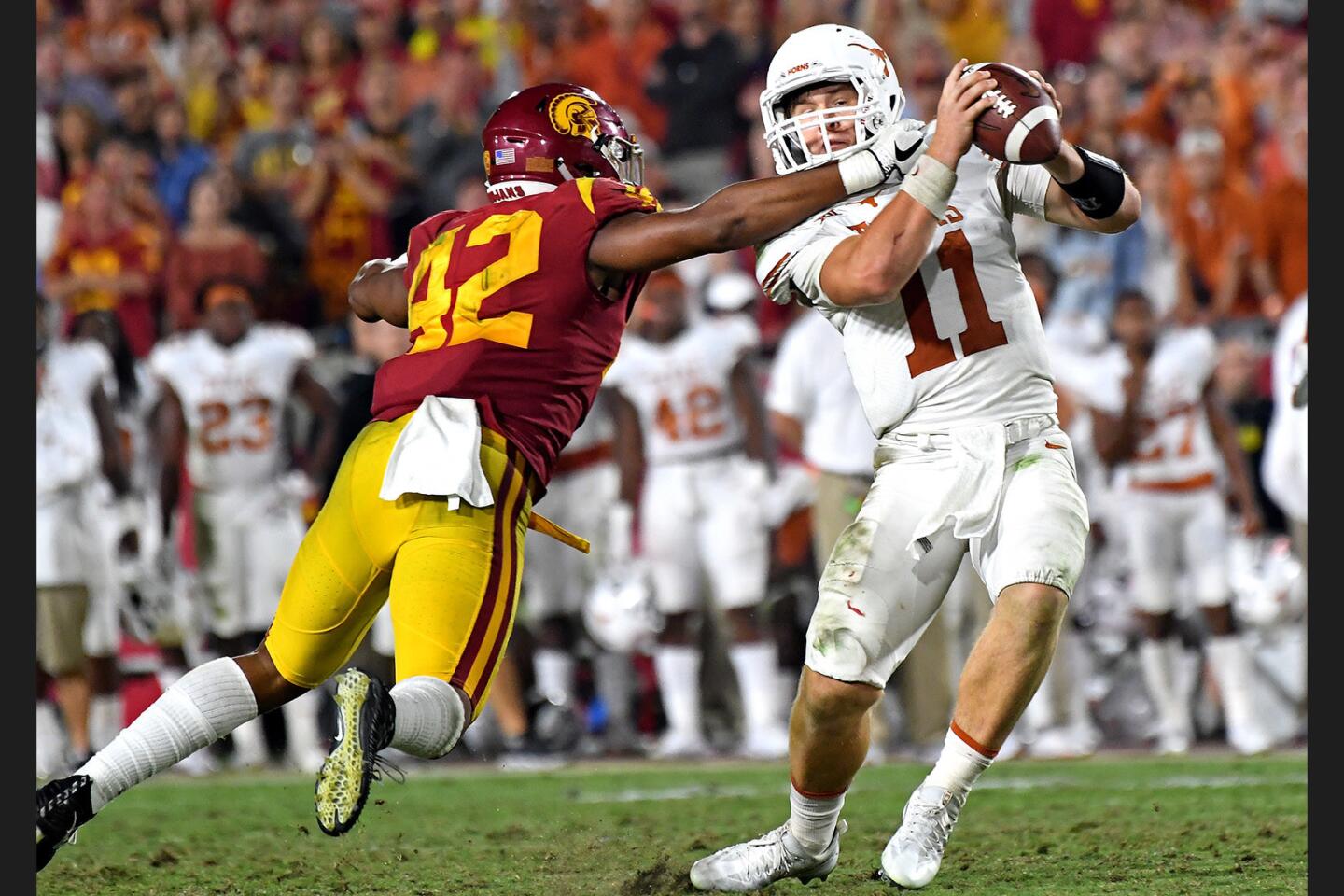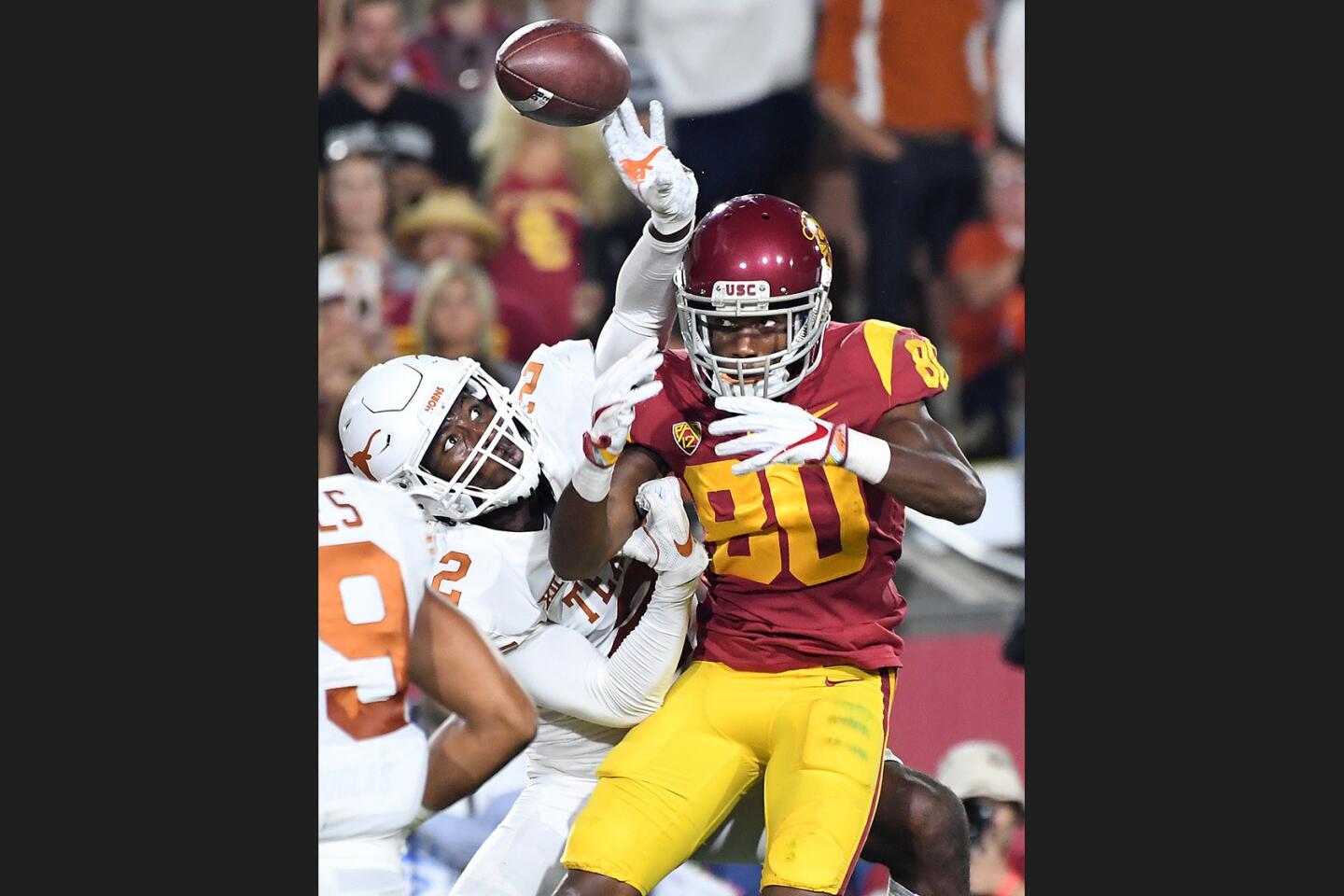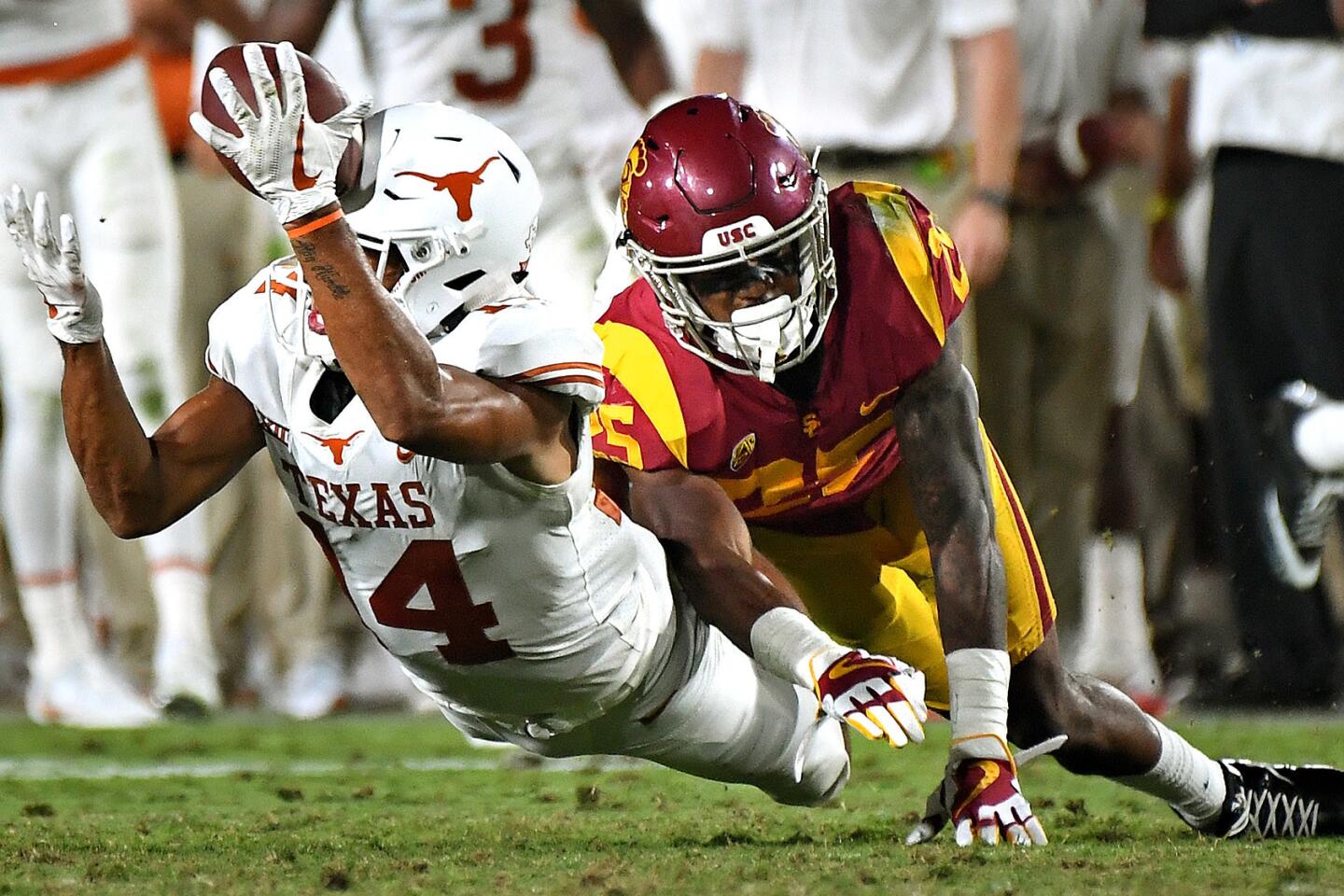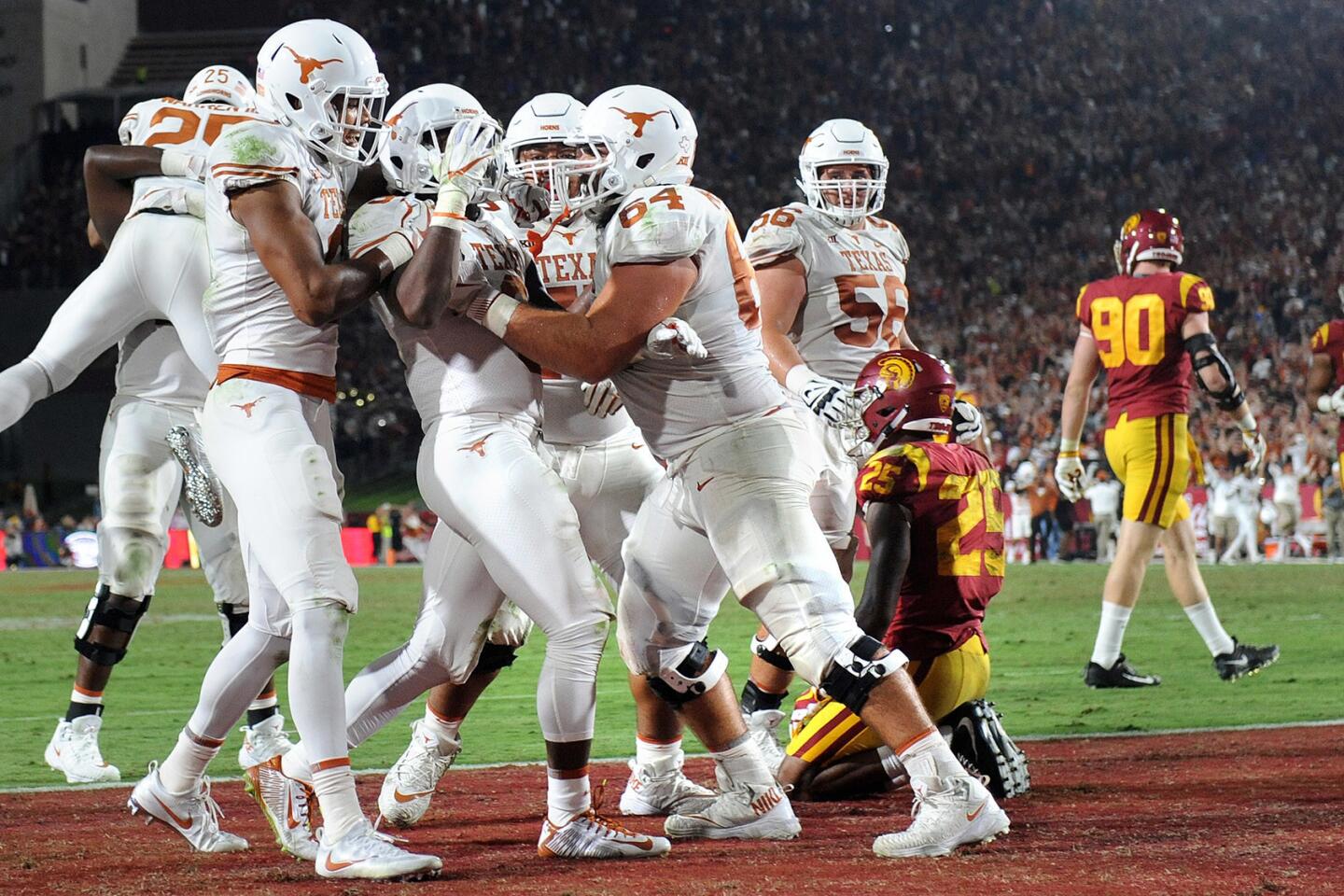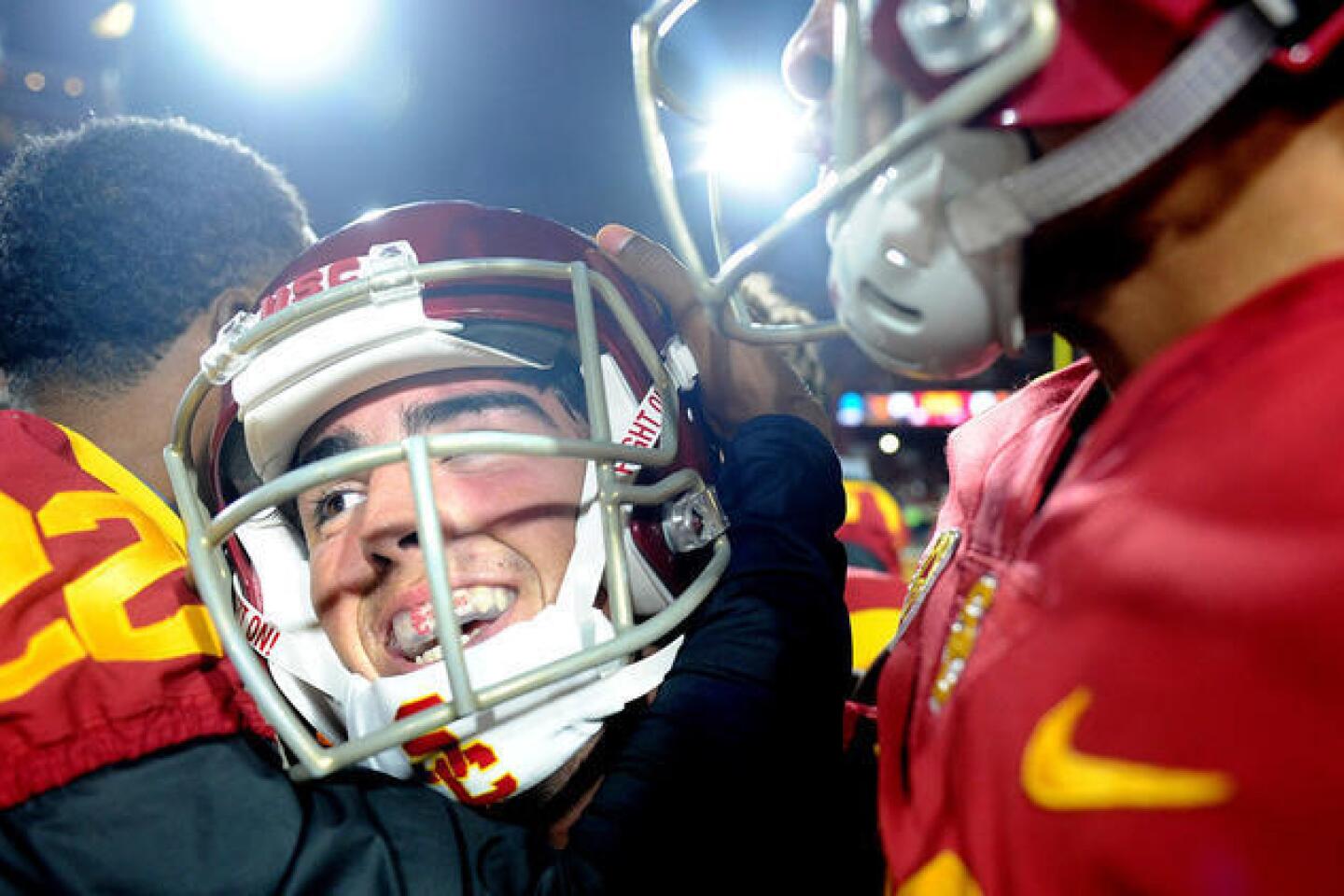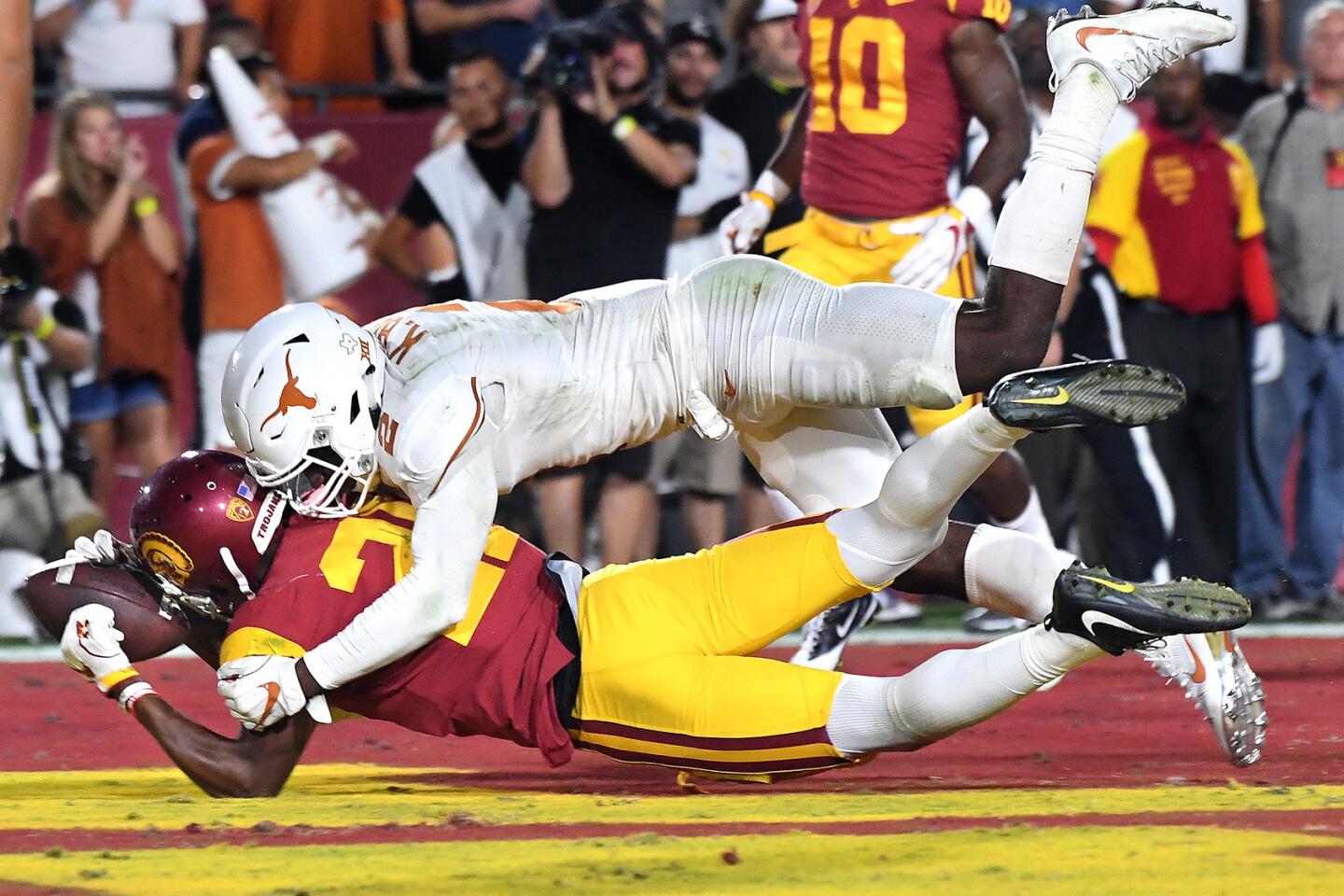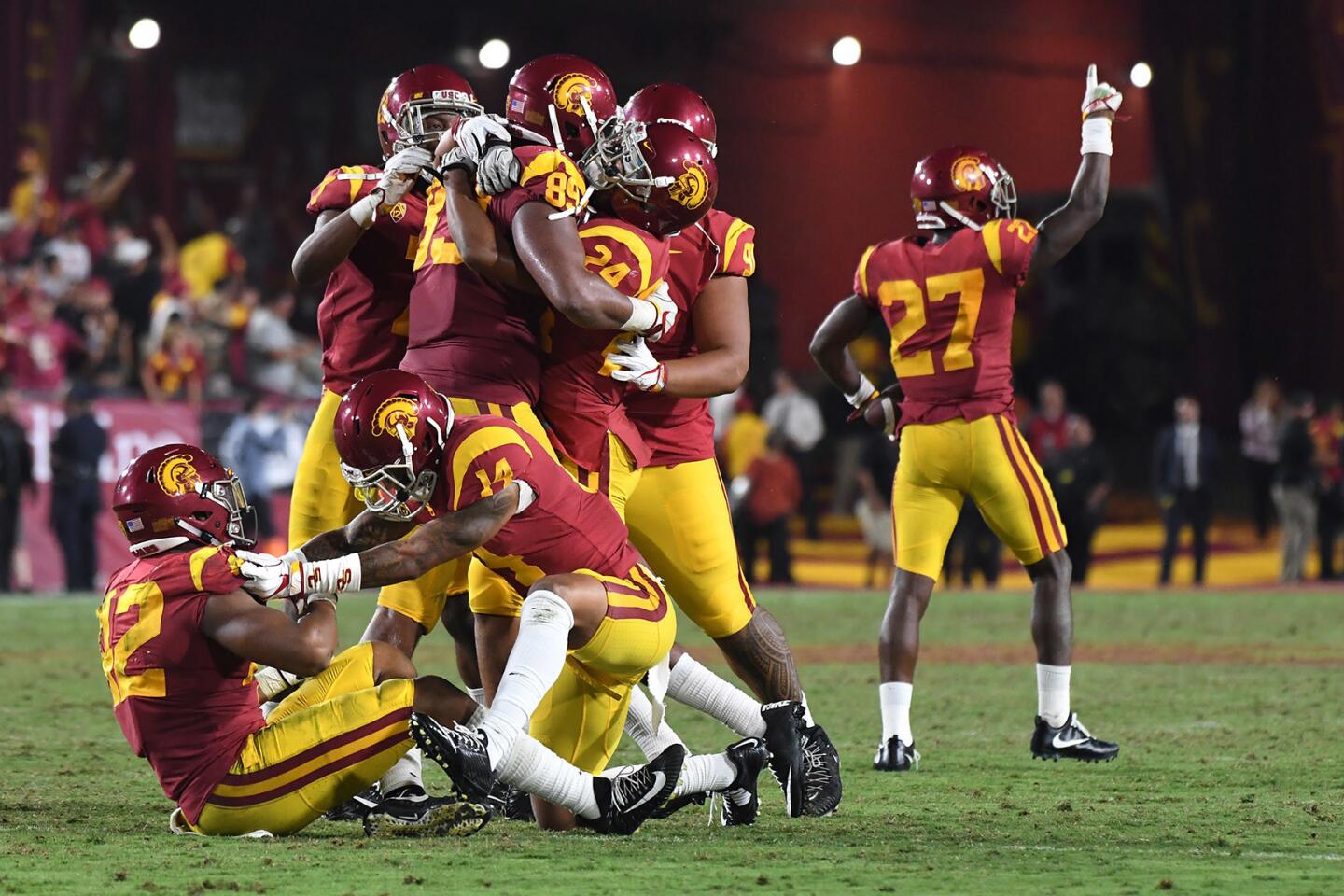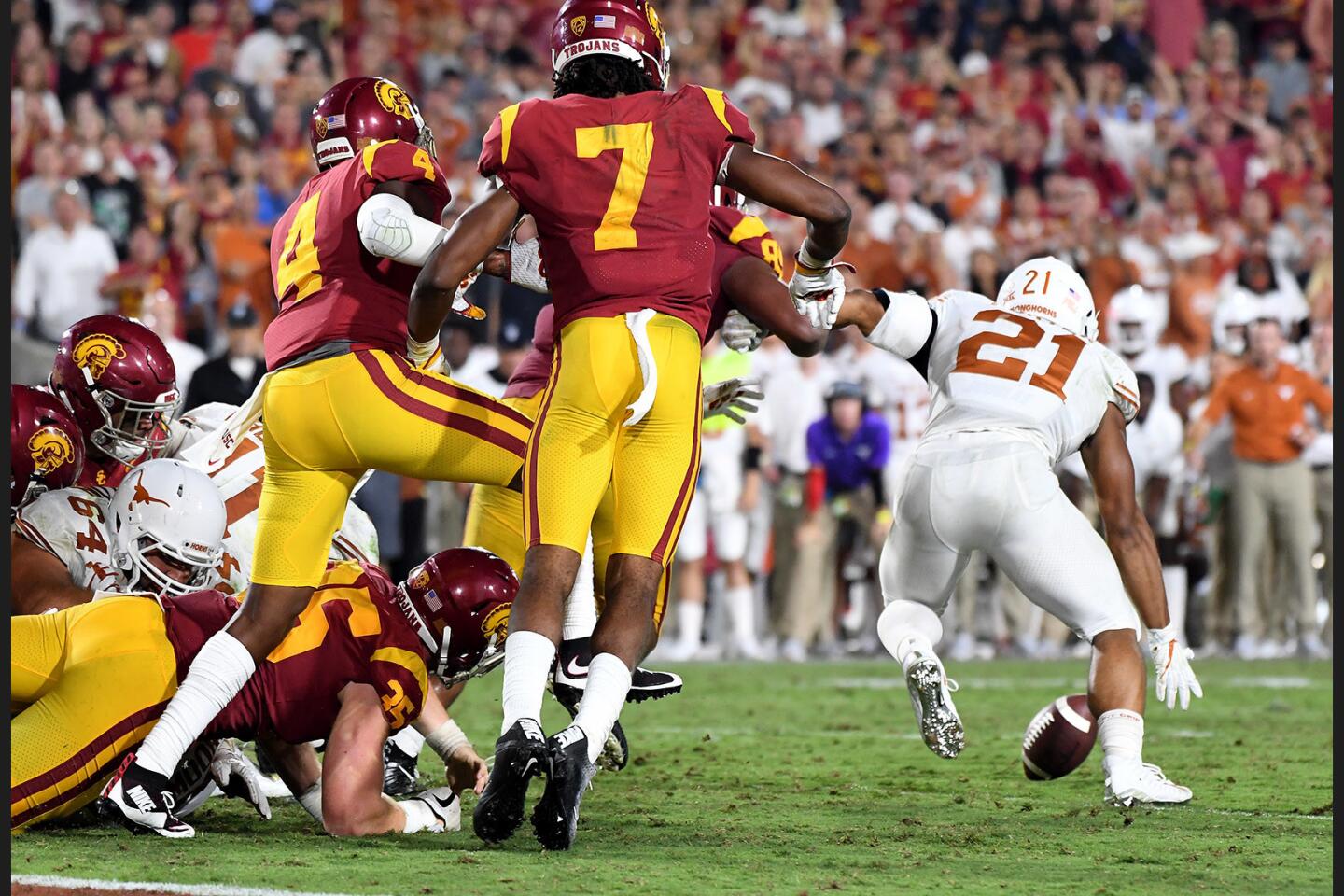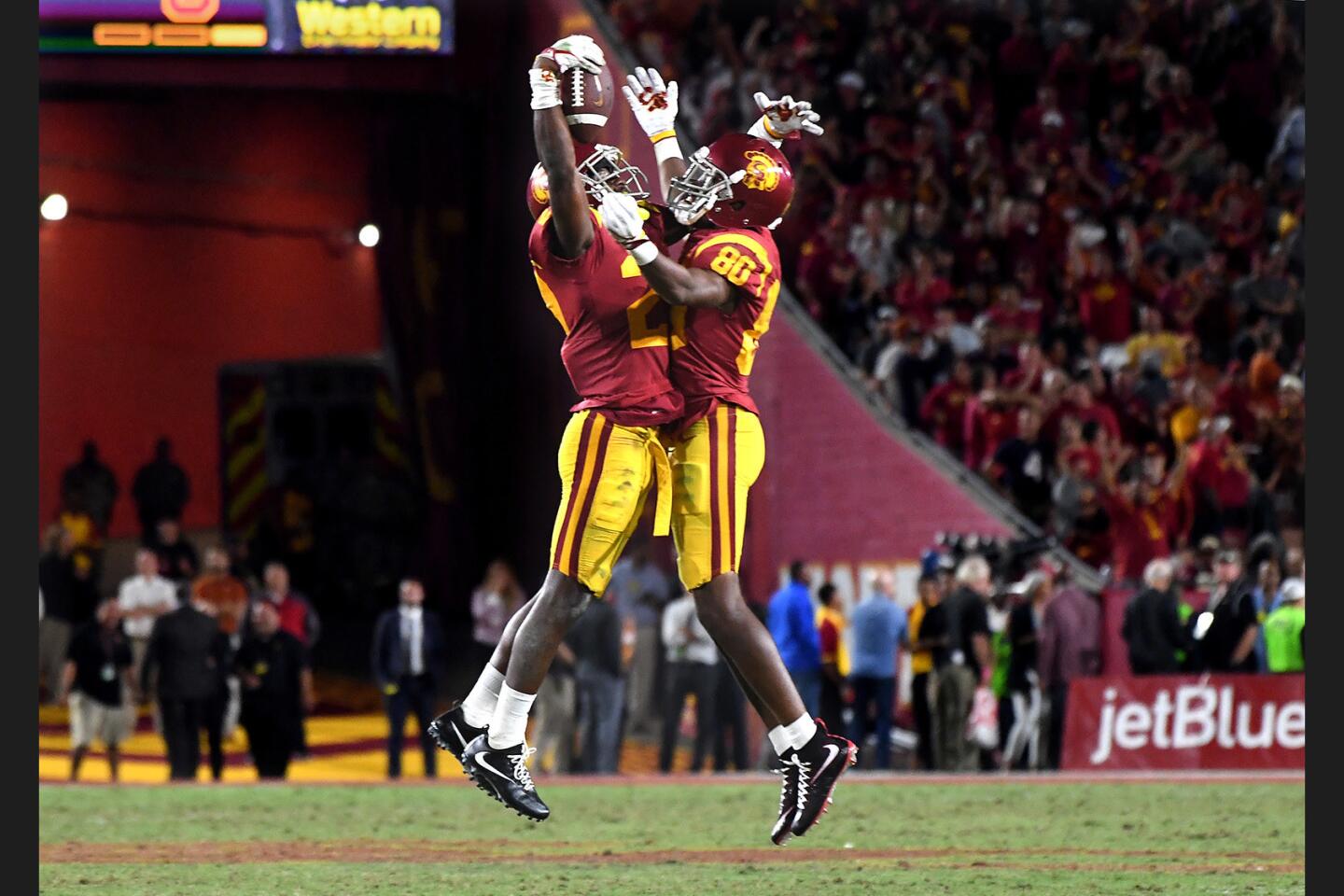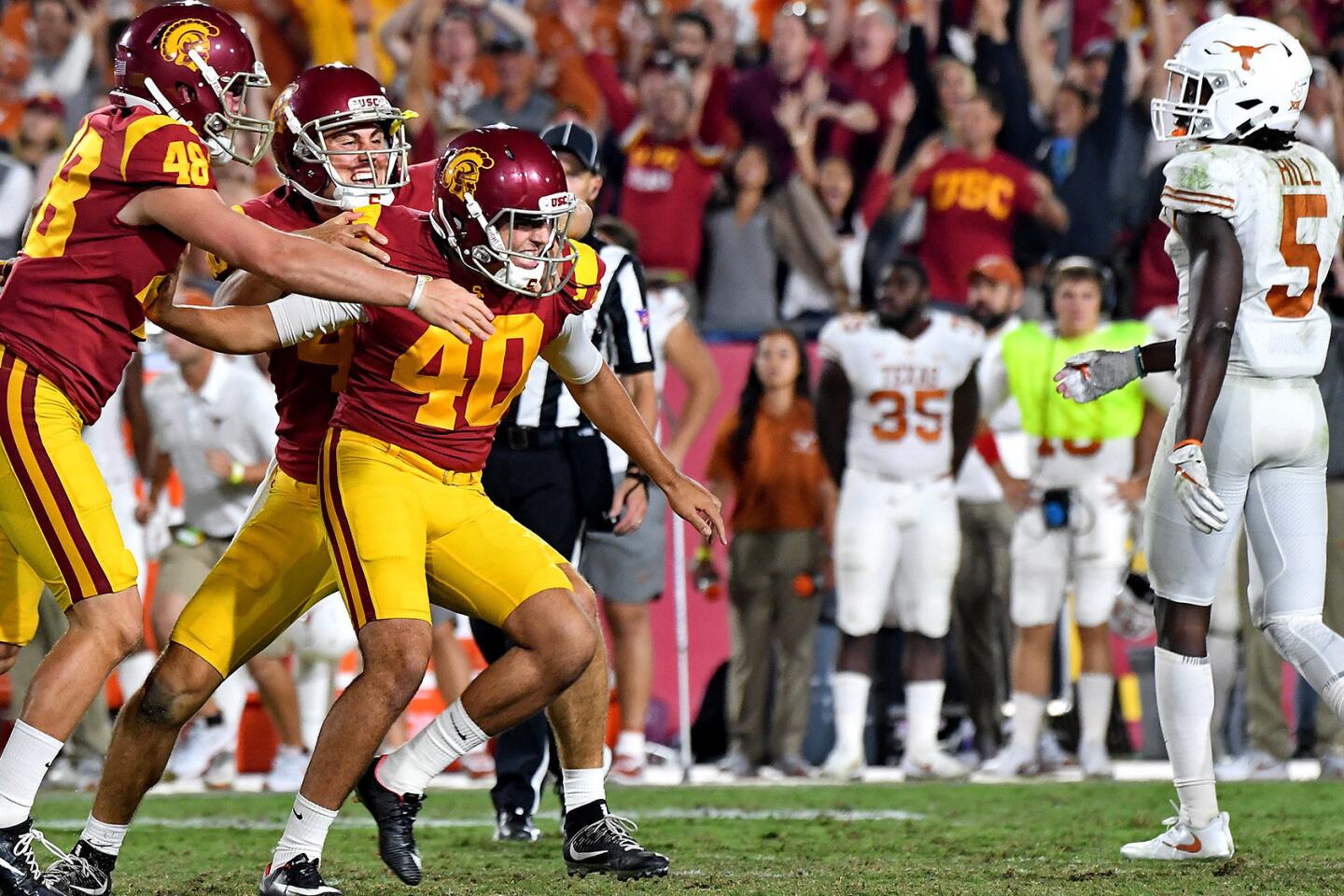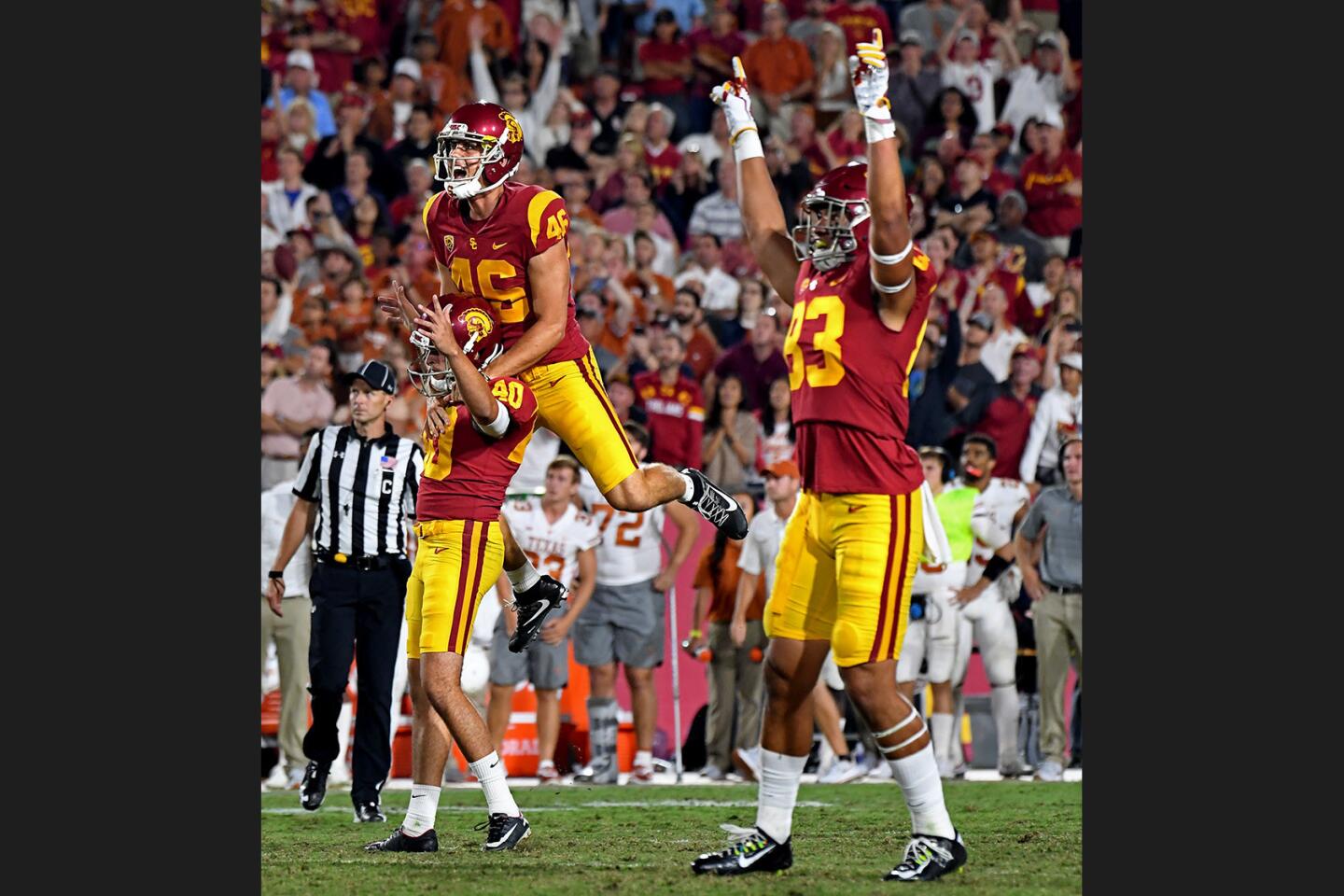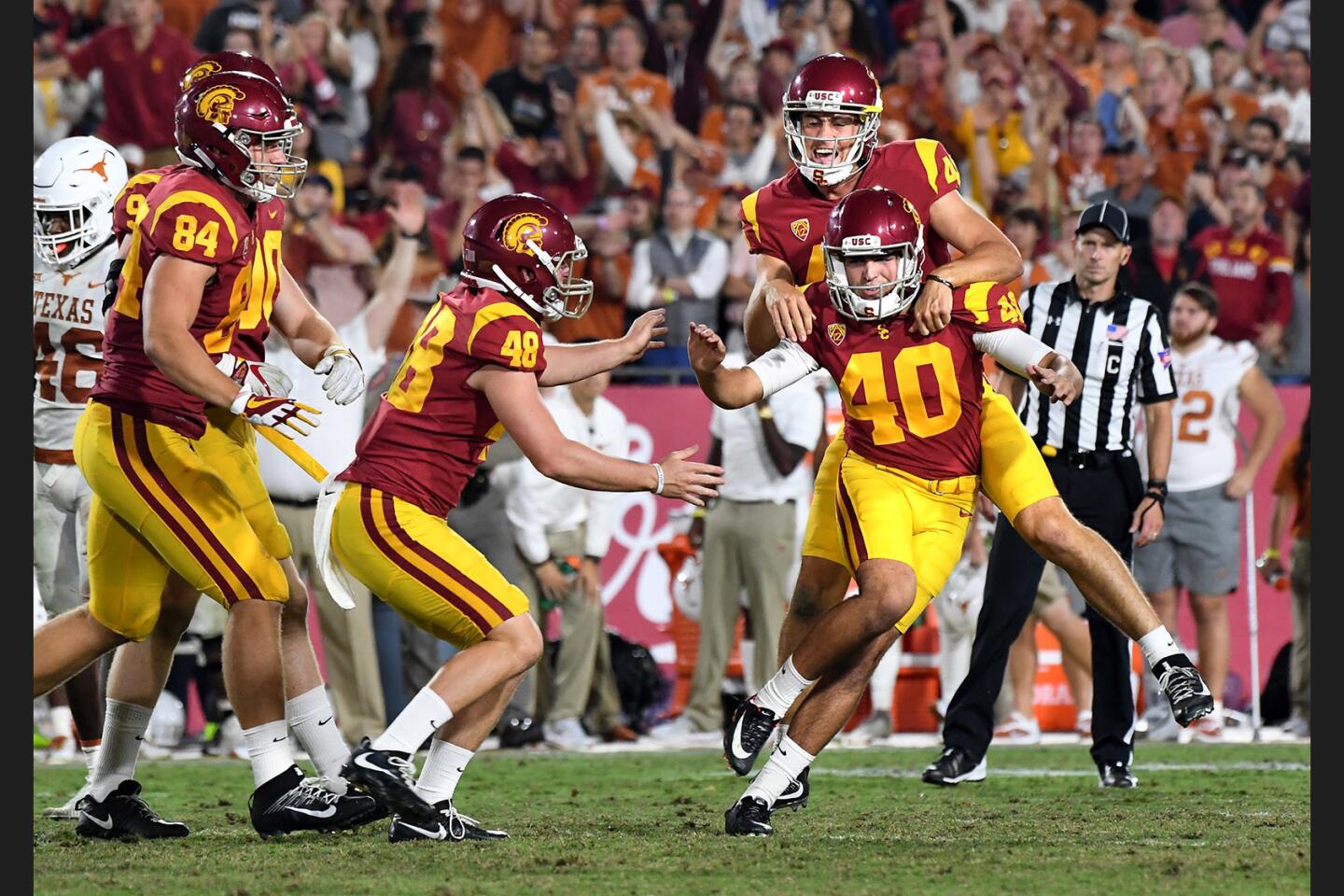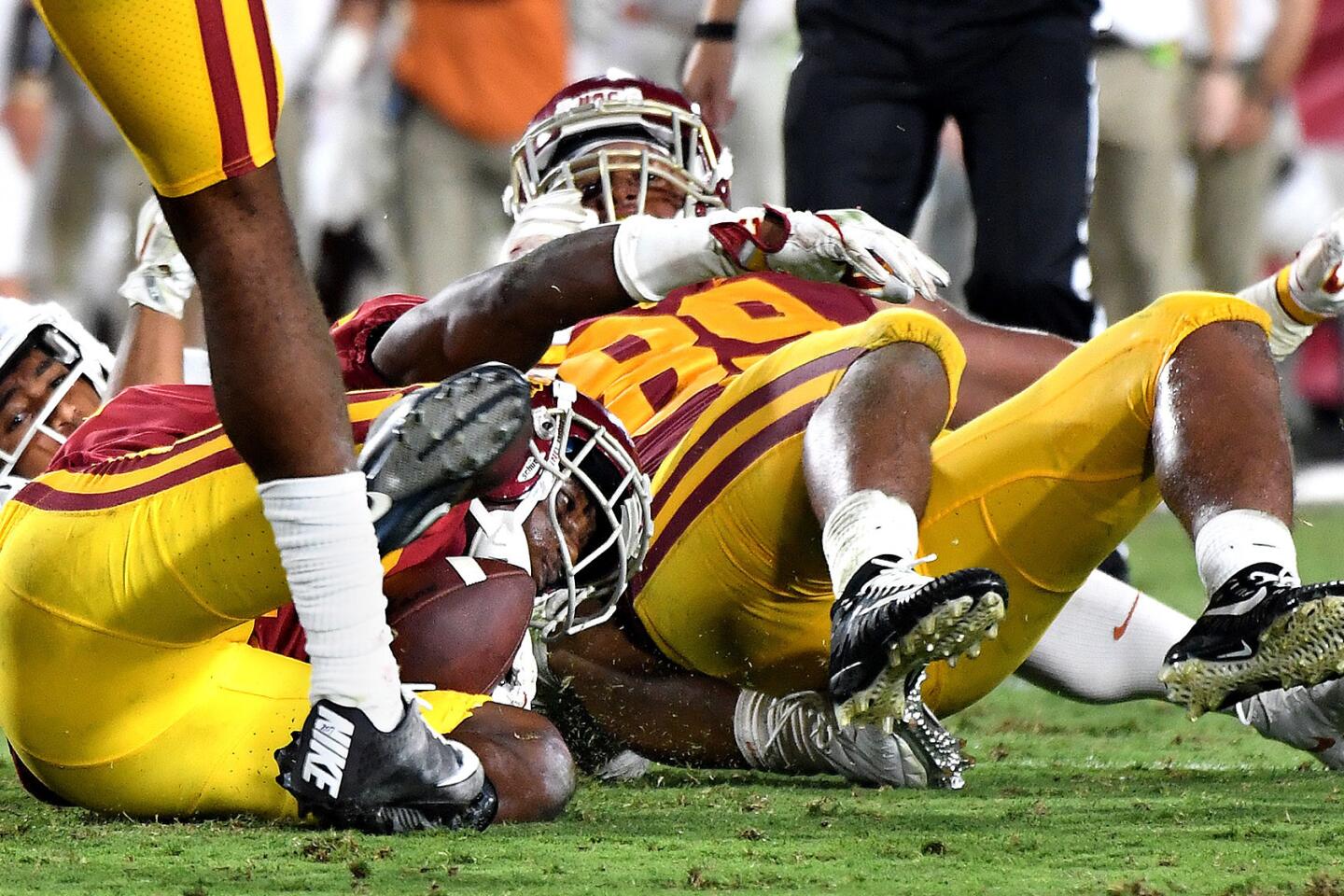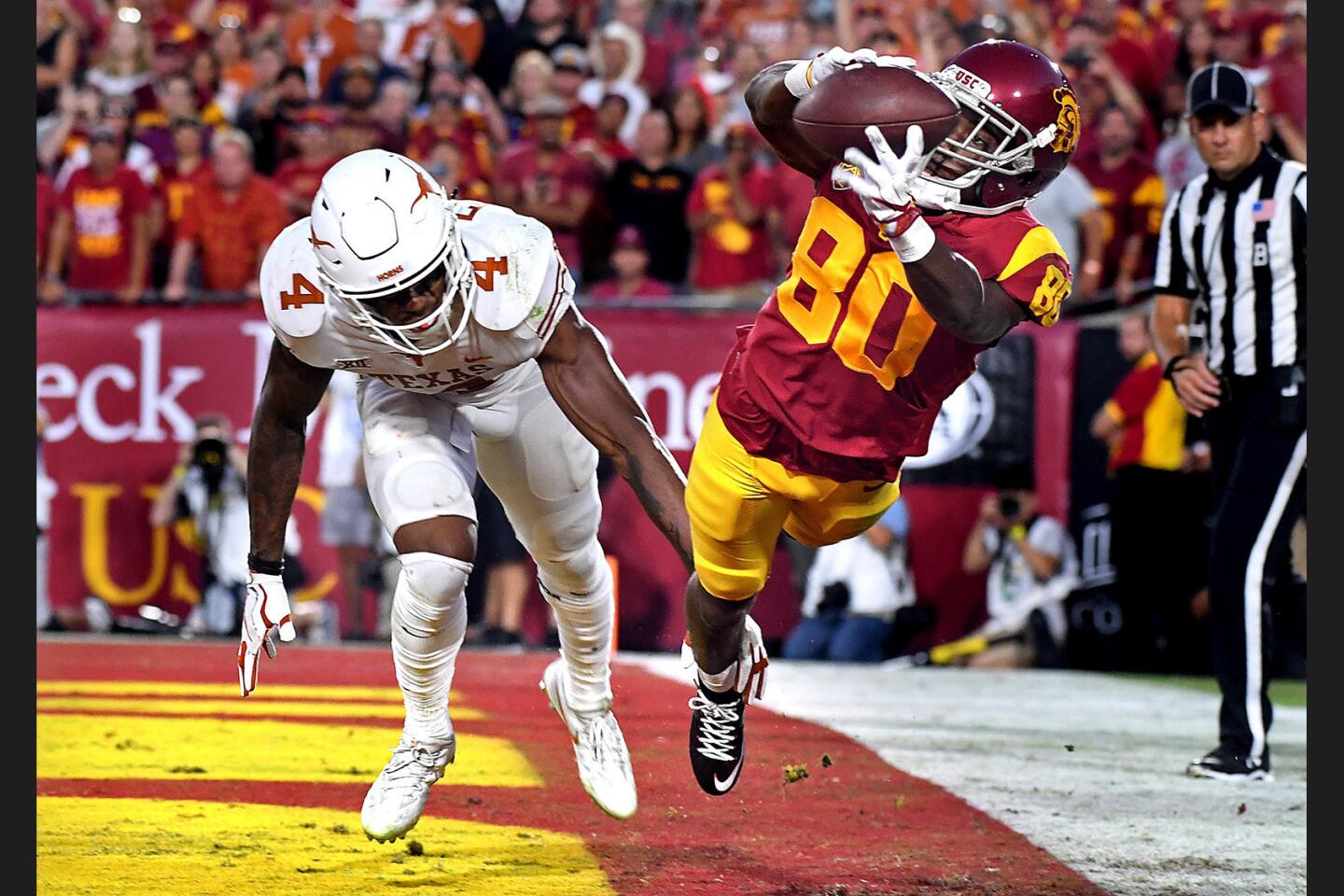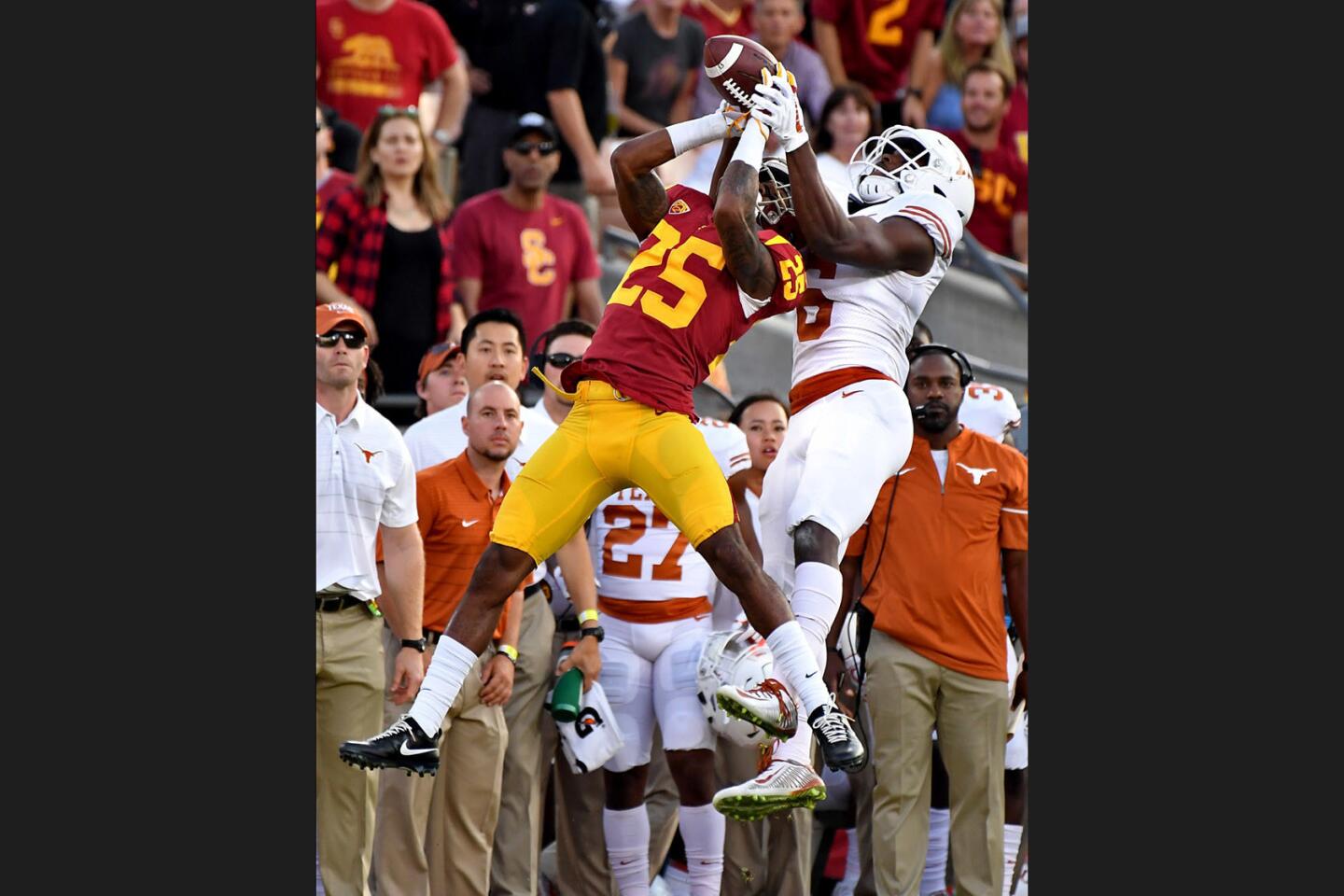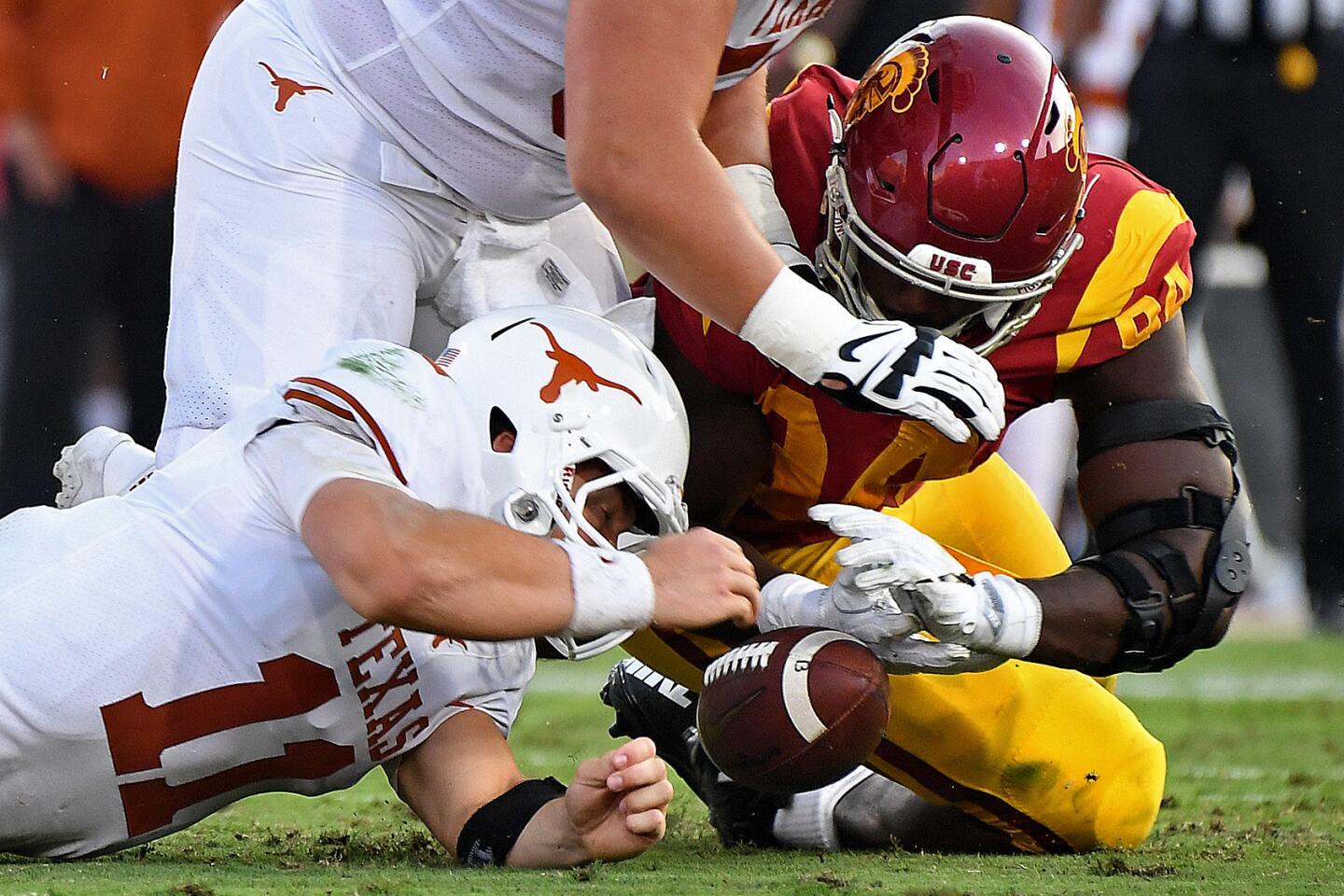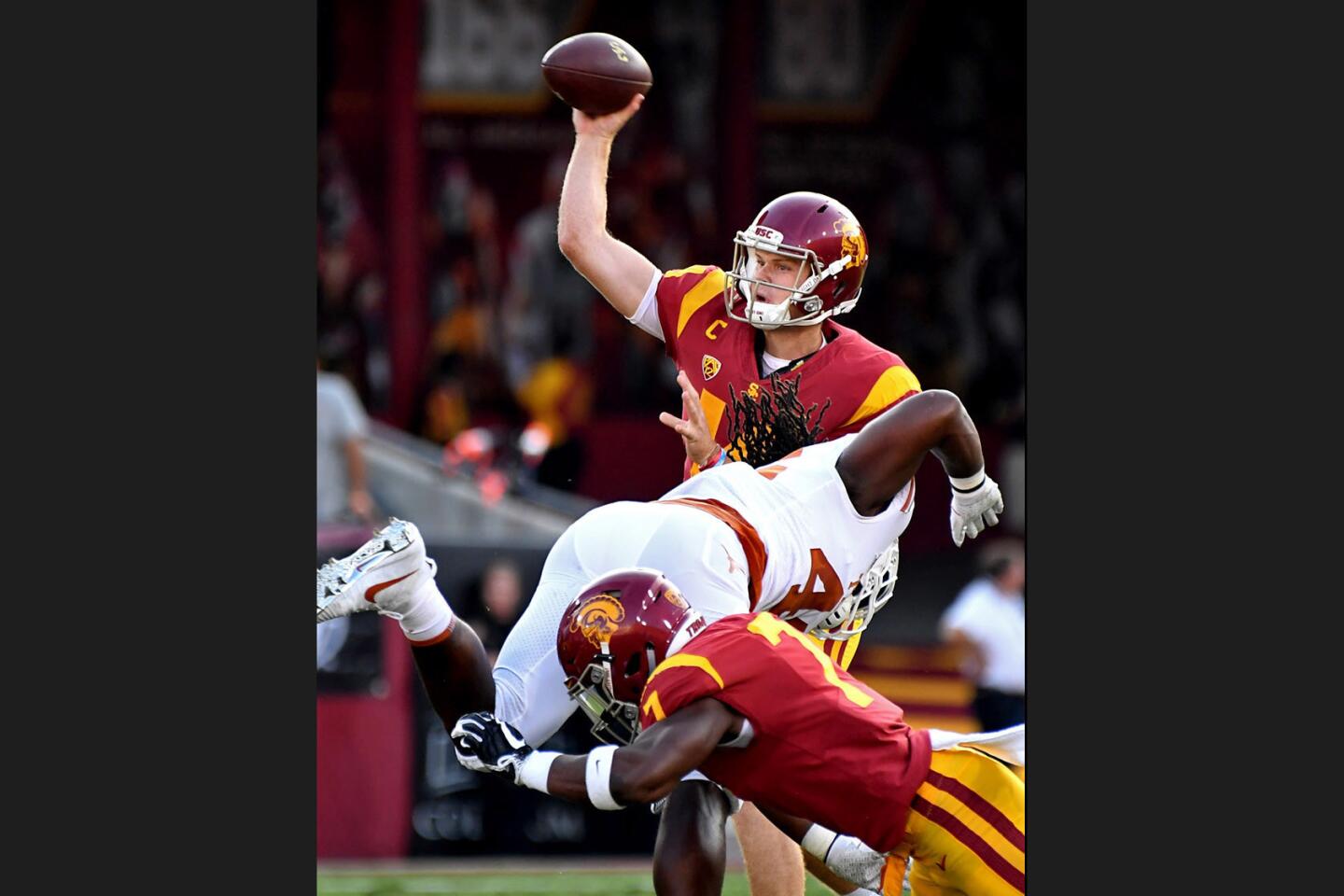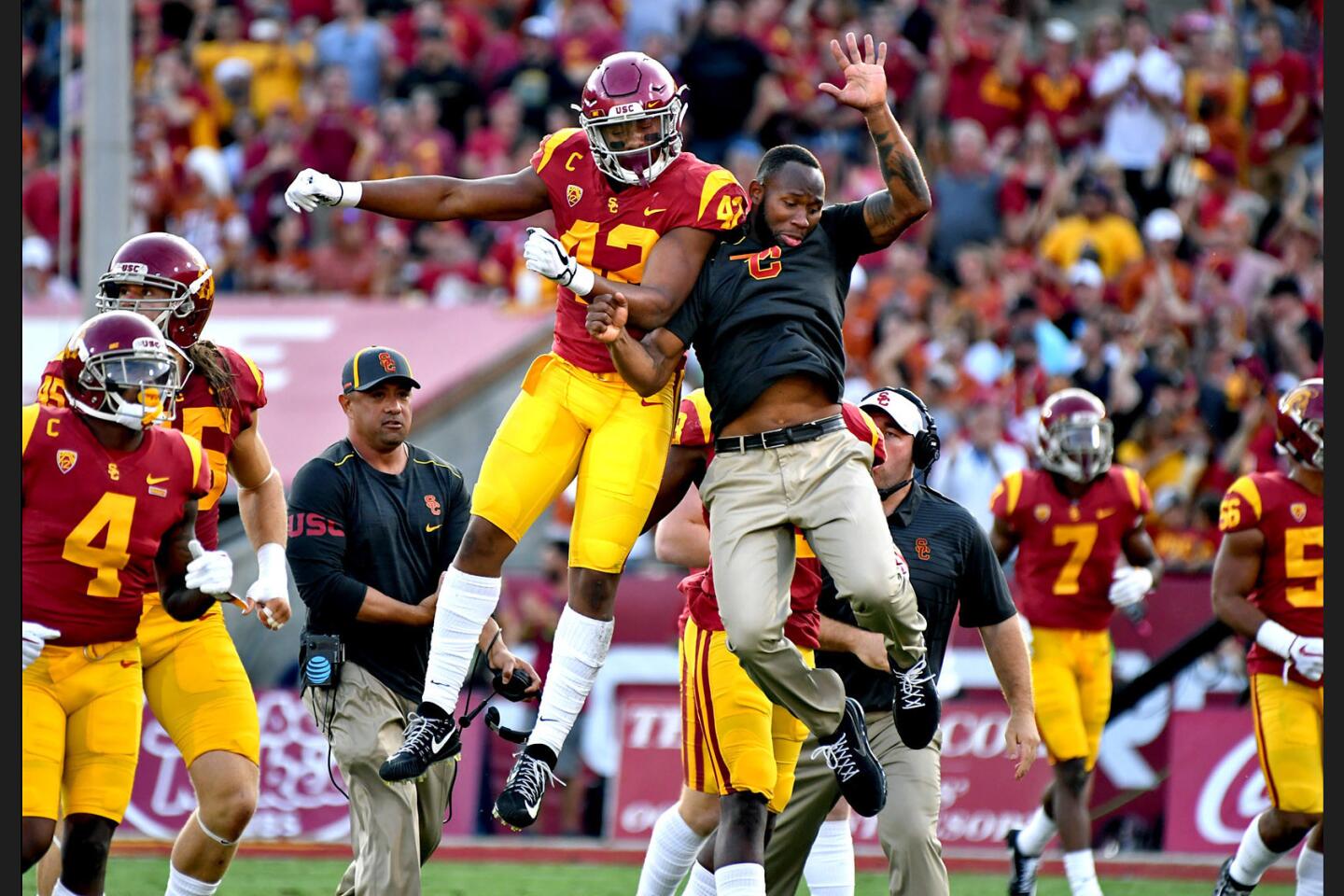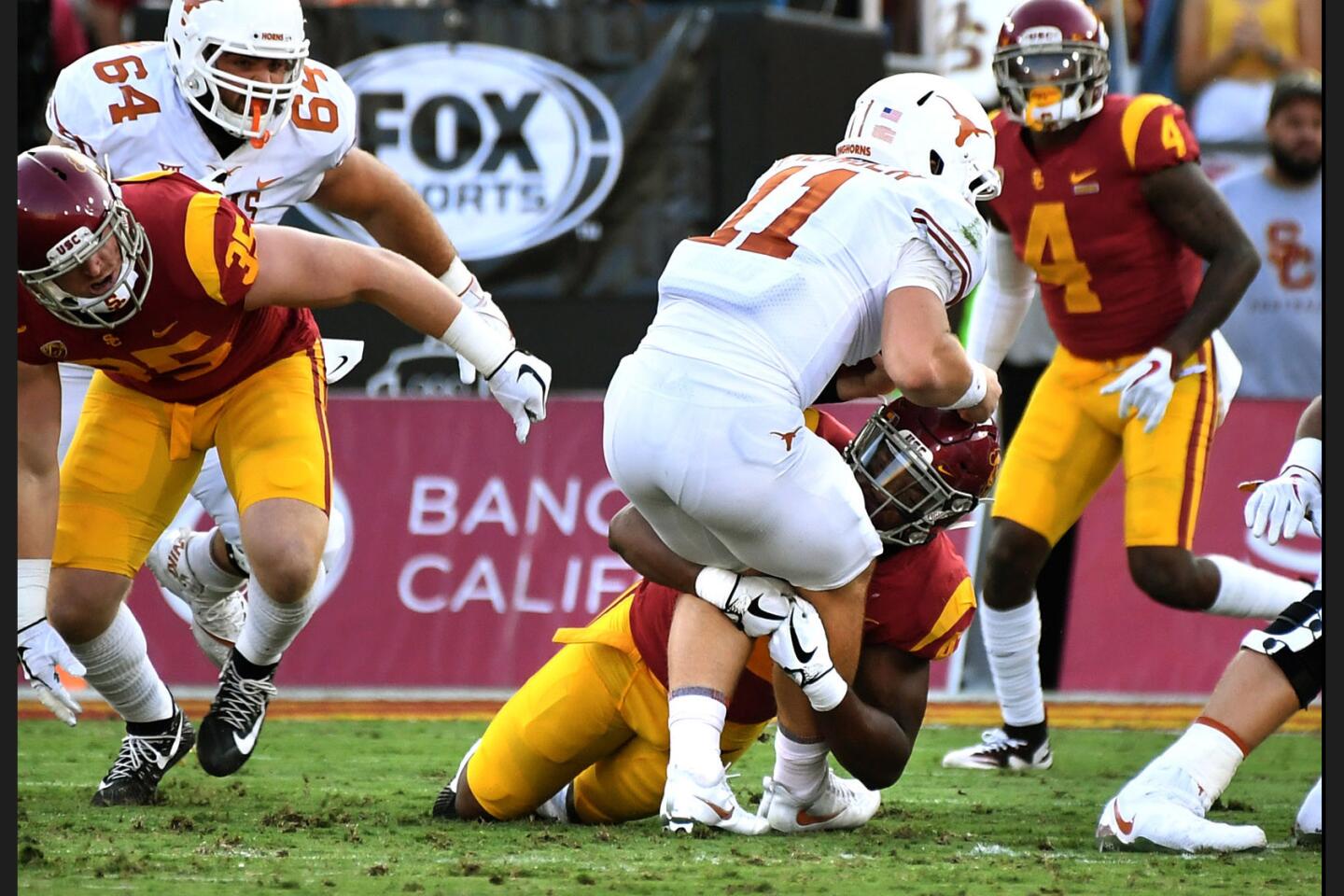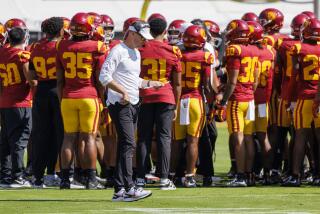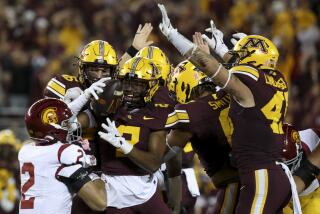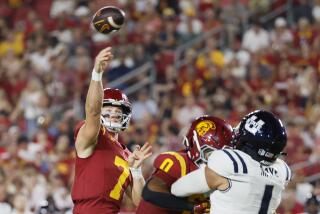USC hopes to drop the drops against California
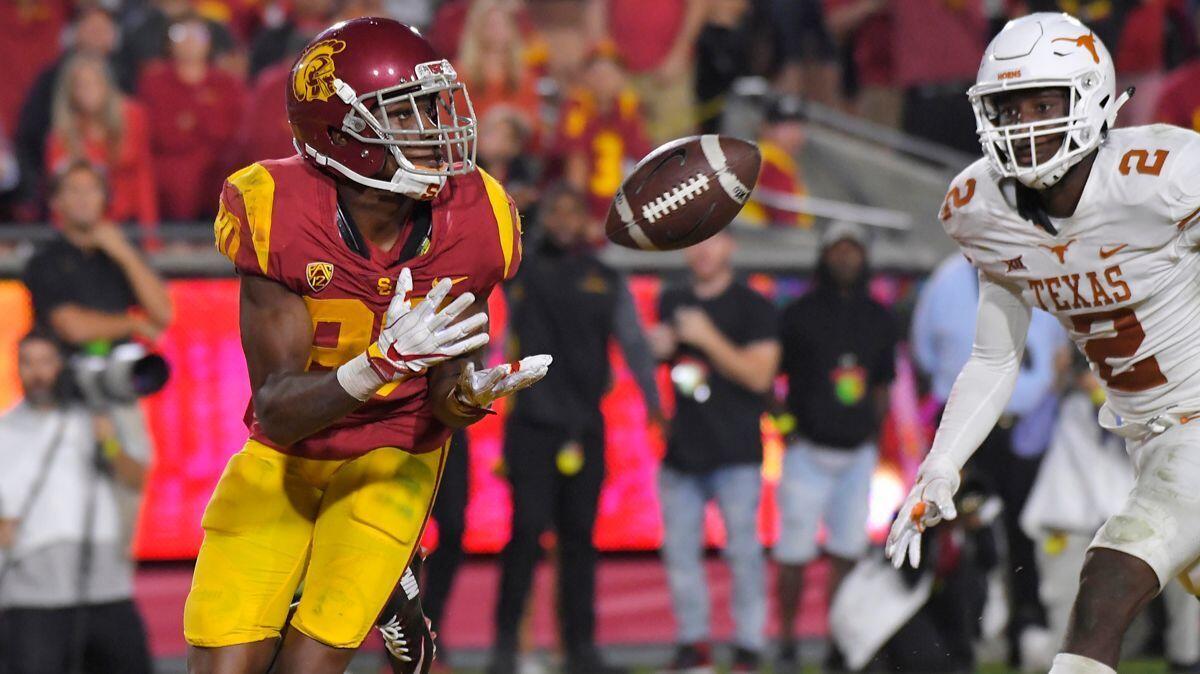
Reporting from Berkeley — Tee Martin stood in a far corner of USC’s practice field this week and acted like a toddler begging for attention. This was intentional, part of a drill. Trojan receivers caught passes from a JUGS machine as Martin swatted at the players, smacked them with foam pads, grabbed their arms, nagged, pushed and prodded.
Practice had ended. The rest of USC’s players had left the field. Eventually, coach Clay Helton did too. The sun was setting and the lights were off when Martin and the last of the receivers walked off the field, finally finished with remedial catching class.
“We needed it,” said Martin, USC’s offensive coordinator and receivers coach. “We’ve got to get back to fundamentals and focus, really.”
USC’s receivers dropped either six or seven passes last week against Texas, depending on who was counting. Either way, it was a continuation of a malady that began in Week 1, disappeared in Week 2 and in Week 3, was enough to torpedo several drives and keep USC’s scoring down.
The performance also exposed a vulnerability in USC’s offense. After two weeks of running the ball with ease, USC faced a Texas front that was loaded with defenders within a couple of yards of scrimmage. The Longhorns dared the Trojans to win in the air. USC did. But it was not easy.
The strategy of stopping the run at all costs provided a blueprint for teams such as California, which USC will play Saturday. It is an imperfect one, but it may be the best option for slowing down USC’s dangerous attack — unless USC’s receivers make that option unpalatable.
“A team’s gonna blitz,” Martin said. “You’ve gotta make ’em pay.”
Texas’ approach could give ideas to Cal coach Justin Wilcox, a former USC defensive coordinator. Cal has frustrated high-flying offenses this season with exotic blitzing schemes, much as Texas did to USC.
USC’s receivers know a stacked-up line of scrimmage is an indictment of their performance.
“When you do that play after play after play, that’s like a direct shot to the receivers and the quarterback, challenging us to get open,” Jalen Greene said.
Deontay Burnett agreed, adding, “We take it personally.”
Said quarterback Sam Darnold: “I think our receivers should take it personally because that means they’re playing one-on-one coverage on our guys.”
Helton prefers a 50-50 balance in his offense, but Texas dashed that plan. USC threw 49 times and ran 37.
There’s one sure-fire way to get defenses to back off, Helton said: “Have 400 yards of passing.” USC just about did, with 397 yards, the second-most of Darnold’s career. But Helton acknowledged that the passing game left some “meat on the bone.”
Six drops cost USC 87 yards, not including potential yardage after the catch. Martin also counted a seventh, an incompletion to Tyler Vaughns in the end zone on a diving, well-defended attempt. That would make 111 yards squandered on drops, each committed by a different player.
“It felt like the guys took turns dropping the ball,” Martin said.
Darnold could have passed for close to 500 yards. Instead, he was left with the worst completion percentage in his career as a starter, 57%. Without drops, it would have been 69%.
Darnold said he maintained confidence in all of his targets — “They know that they can’t drop the ball” — and he returned to any open receiver last Saturday without hesitation. But Martin said it’s natural for that confidence to wane if the drops continue.
“It’s a good thing to know he doesn’t get down in games on guys, but I think as quarterback, over time, it can affect you,” Martin said. “I’ve been in that situation before. And you think about it.”
The dropsies also highlighted another problem for USC’s offense. The Trojans haven’t settled on a reliable No. 3 receiver. After Greene’s drop led to an interception returned for a touchdown, USC yanked him and inserted Vaughns, who also has taken starting repetitions this week during practice.
“We’re definitely well aware we haven’t been playing up to our standards. Especially me,” Greene said. “Just picking it up and showing up to the party, making my plays — simple things like that. That catch against Texas, that’s something I catch every day, catch in my sleep, so just not being lackadaisical, just focusing in on every ball.”
Cal hasn’t defeated USC since 2003, and achieving the upset would entail more than just a defensive effort. The Bears’ typically explosive offense has been a bit more modest this season, ranking 62nd nationally in points, with 31.7 per game. Putting up that many points against USC, which gave up 10 in regulation to Texas, could prove difficult.
And the Bears’ defense may remain gun-shy around Darnold. It yielded five touchdowns to him a season ago. It was proof that daring a Heisman Trophy candidate to throw is a dangerous proposition.
“Yeah,” Martin said. “When they catch the ball, it looks real good.”
Follow Zach Helfand on Twitter @zhelfand
More to Read
Go beyond the scoreboard
Get the latest on L.A.'s teams in the daily Sports Report newsletter.
You may occasionally receive promotional content from the Los Angeles Times.
